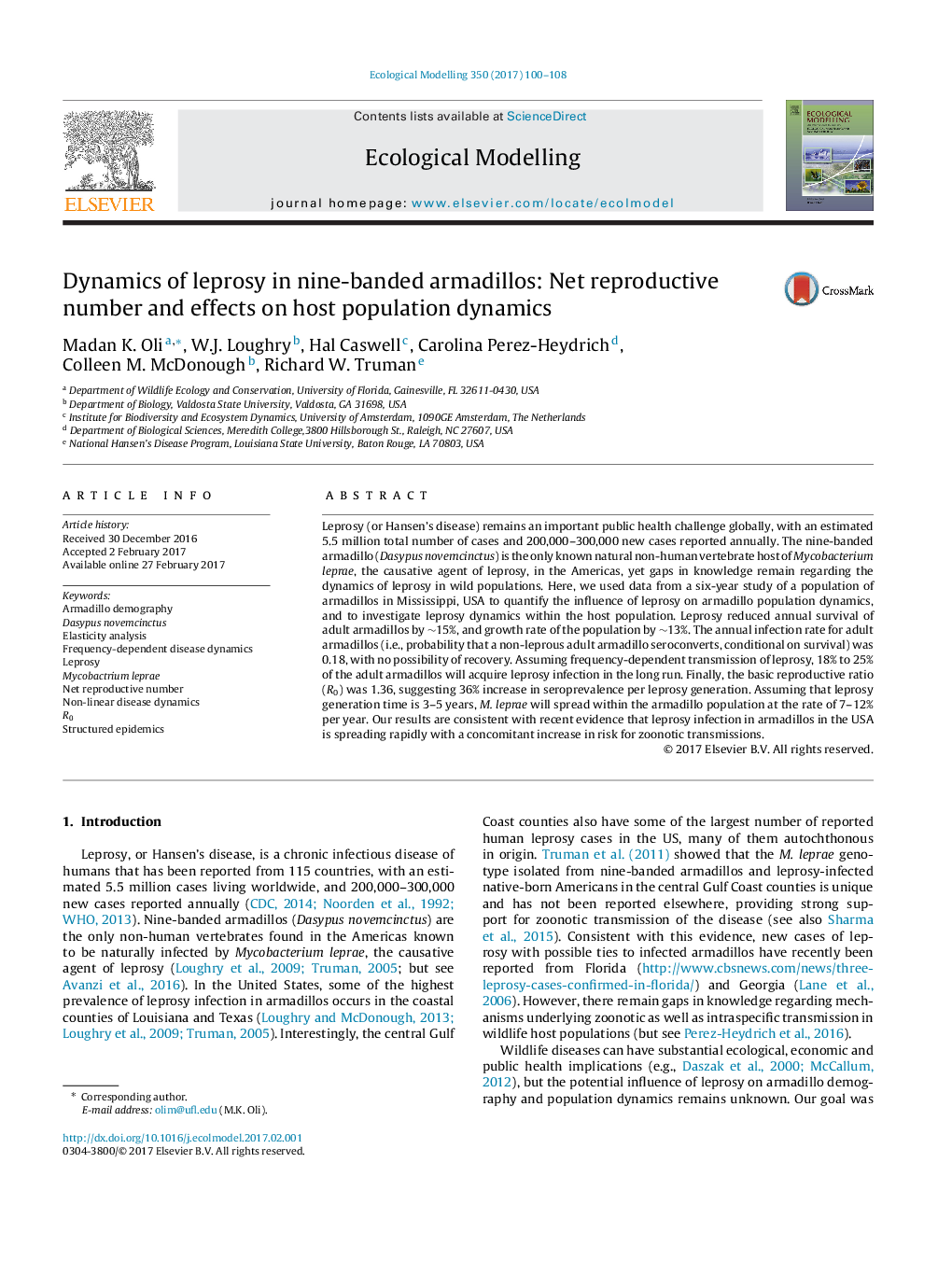| Article ID | Journal | Published Year | Pages | File Type |
|---|---|---|---|---|
| 5742238 | Ecological Modelling | 2017 | 9 Pages |
Leprosy (or Hansen's disease) remains an important public health challenge globally, with an estimated 5.5 million total number of cases and 200,000-300,000 new cases reported annually. The nine-banded armadillo (Dasypus novemcinctus) is the only known natural non-human vertebrate host of Mycobacterium leprae, the causative agent of leprosy, in the Americas, yet gaps in knowledge remain regarding the dynamics of leprosy in wild populations. Here, we used data from a six-year study of a population of armadillos in Mississippi, USA to quantify the influence of leprosy on armadillo population dynamics, and to investigate leprosy dynamics within the host population. Leprosy reduced annual survival of adult armadillos by â¼15%, and growth rate of the population by â¼13%. The annual infection rate for adult armadillos (i.e., probability that a non-leprous adult armadillo seroconverts, conditional on survival) was 0.18, with no possibility of recovery. Assuming frequency-dependent transmission of leprosy, 18% to 25% of the adult armadillos will acquire leprosy infection in the long run. Finally, the basic reproductive ratio (R0) was 1.36, suggesting 36% increase in seroprevalence per leprosy generation. Assuming that leprosy generation time is 3-5 years, M. leprae will spread within the armadillo population at the rate of 7-12% per year. Our results are consistent with recent evidence that leprosy infection in armadillos in the USA is spreading rapidly with a concomitant increase in risk for zoonotic transmissions.
